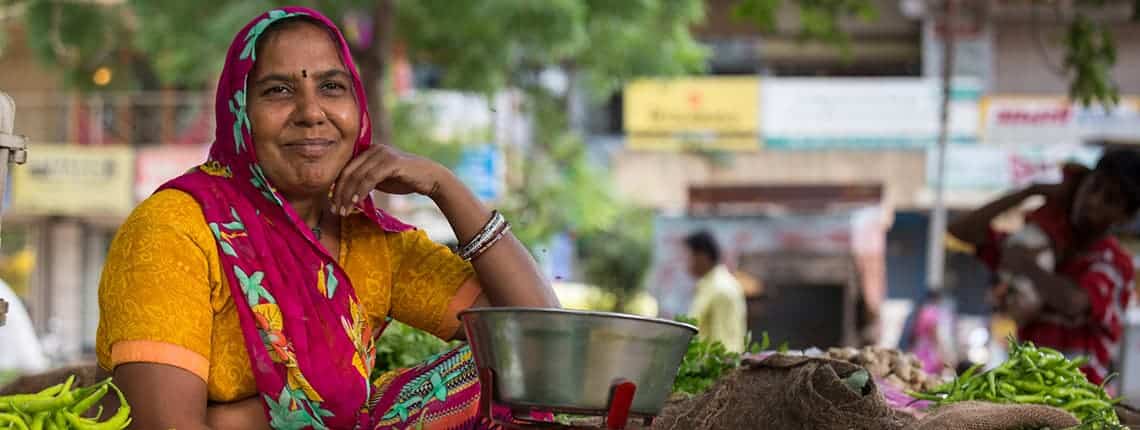India’s Street Vendor Protection Act is widely lauded for, among others, being the first enabling legislation that ensures street vendors’ effective representation in decision making, yet a close look nearly a decade later shows its implementation is far from exemplary.
The Street Vendors (Protection of Livelihood and Regulation) Act, 2014 was enacted after a long struggle and is often seen as an exemplar to be emulated in other parts of the world. As well as providing legal recognition for street vendors, it prohibits evictions and relocations without compliance with due process.1
In August 2021, India’s Parliamentary Standing Committee on Urban Development submitted a report to the Parliament on the implementation of the Act. The report contains data that reveals a story of partial implementation only.
A key reason for the committee’s decision to examine the Act’s provisions was the introduction of the Pradhan Mantri Street Vendor's AtmaNirbhar Nidhi (PM SVANidhi) scheme, which provides loans to street vendors. This scheme gained significance in the post-COVID-19 recovery efforts. The scheme is available only to beneficiaries in states and union territories that have notified rules and schemes under the Street Vendor Protection Act. India has 28 states and eight union territories. While there is no reliable data on the extent of street vending in India (one estimate puts it at 10 million), the certification process in terms of the Act can give some reliable estimates.
Notable among the Parliamentary Standing Committee’s recommended corrective measures regarding implementation are:
- The creation of model vending zones.
- With the aim of ending police harassment and unauthorized eviction of street vendors, relevant ministries should include the Street Vendor Protection Act in the training curriculum of police officers.
- An overall monitoring role should be given to the Ministry of Housing and Urban Affairs to ensure that states and union territories are giving the mandated 40 per cent representation within the Town Vending Committees to street vendors.
Once a city’s Town Vending Committee is constituted under the Act, it is responsible for the smooth functioning of street vending within that city. Its tasks include issuing vending certificates and preparing the town vending plan. The plan primarily consists of creating infrastructure for vending zones and the earmarking of zones. Three types of zones are permitted – vending zones (where street vendors can vend for 24 hours), partial vending zones (specific time periods when vending is permitted) and no-vending zones.
Among the Parliamentary Standing Committee’s findings was that – out of 4,372 towns – street vending plans have been made only in 1,169.
The report also notes that the setting up of Town Vending Committees is unsatisfactory. Based on Ministry of Housing and Urban Affairs records, only 17 states/union territories have constituted these committees in all eligible cities and towns, 14 have constituted them in 50-99 per cent of eligible cities and towns, and two have set them up in less than half.
Concerns regarding Town Vending Committees raised by stakeholder organizations that appeared before the Parliamentary Standing Committee included that vendors are forced to sign documents without being given the opportunity to read what they are signing, i.e., without following proper procedure; and non-circulation, or absence, of an agenda. Street vendors’ associations highlighted the eviction and harassment of vendors by police and local authorities.
Other worrying aspects raised in the report are that basic infrastructure – such as toilets, water and shelter from rain/sun – is not provided to vendors in many vending zones.
Some of the recommendations made by the Parliamentary Standing Committee require greater debate by vendor organizations to gauge whether they are in their best interests. For example, it is recommended that vending zones are developed on a public-private-partnership model, and that there should be greater integration with the Smart-city planning process.
But three suggestions stand out as essential to progress:
- Setting up a centralized database of cases of eviction and relocation of street vendors. This would be useful for policy making.
- Advising Urban Local Bodies to identify vacant spaces near parks, community centres, etc. and demarcate and notify them as vending zones/markets. This would create business potential for street vendors. The report notes that vending zones far from cities are a waste of resources.
- Removing the ceiling in the number of vendors. The Act recommends that the number of street vendors be limited to 2.5 per cent of the population of the ward, zone, town or city. Because in large and heavily populated cities like Mumbai and Delhi, which are centres of economic activity, the ceiling is grossly inadequate, the report urges the Ministry of Housing and Urban Affairs to explore the possibility of revisiting this ceiling.
The Parliamentary Standing Committee’s report provides a useful country-wide overview of the status of implementation of the Act. However, the challenges posed by the lived realities – both for street vendors and municipal authorities – are not adequately captured. State-specific studies that include the street vendors, local authorities and relevant experts would be crucial in this regard.
1. SEWA. 2014. Street Vendors’ Laws and Legal Issues in India. WIEGO Law and Informality Resources. Cambridge, MA, USA: WIEGO
